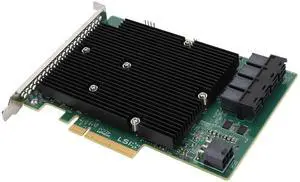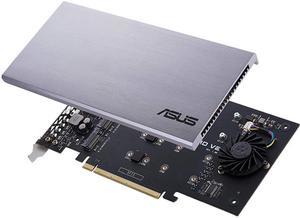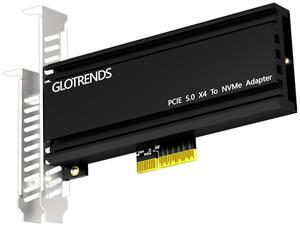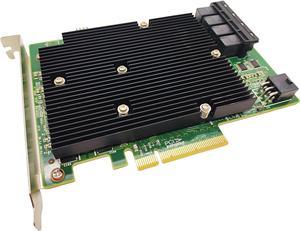- Home
- Components & Storage
- Hard Drive
- Controllers / RAID Cards
Controllers / RAID Cards
- In Stock
- Sold by Newegg
- Make an Offer
- New
- Brands
- Show More
- Price
- Show More
- Type
- Show More
- External Connectors
- Show More
- Internal Connectors
- Show More
- Interface
- Show More
- RAID
- Show More
- All Top Brands
- Availability
- Condition
- Current Promotion
- Discount
- Sold by
- Useful Links
- New
Show More
- Customer Ratings
- & up
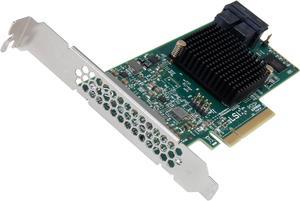
- Internal Connectors: 2 x SFF-8643 mini-SAS HD
- Transfer Rate: Up to 12Gb/s
- Part: LSI00344
- Dimensions: 6.00" x 2.60"
- Model #: LSI00344
- $58.04 –
- More options from $58.04 - $255.00
- Free Shipping
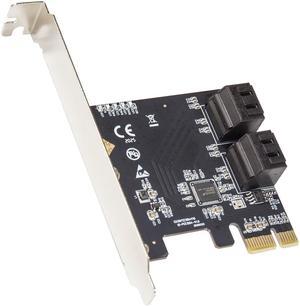
- Internal Connectors: 4 x SATA 6.0Gb/s
- Package Contents: (1) SATA III 4-port PCI-e 3.0 x1 Slot Controller Card (1) Driver CD (2) 19" SATA Cable (1) Standard and Low Profile Brackets (1) User Manual
- Model #: SI-PEX40156
- $26.99 –
- More options from $26.98 - $36.18
- Free Shipping
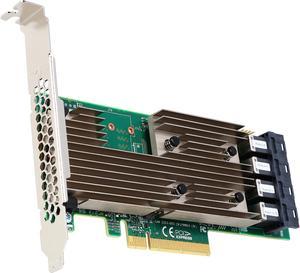
- Internal Connectors: 4 x SFF-8643 mini-SAS HD
- Transfer Rate: Up to 12Gb/s
- Part: 05-25703-00
- Operating Systems Supported: Microsoft Windows, Linux (Oracle, SuSE , Red Hat), Solaris, VMware, FreeBSD, CentOS, Canonical, Citrix
- Model #: 05-25703-00
- $97.99 –
- More options from $97.99 - $407.50
- Free Shipping
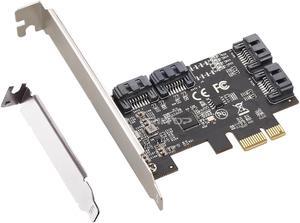
Limited time offer, ends 12/07
- Type: Controller Card
- Model #: PCE4S-ASM
- $24.99 –
- Free Shipping
- $24.50 - $24.99
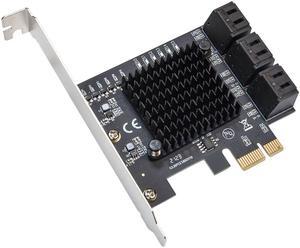
- $16.49 –
- More options from $16.49 - $69.99
- Free Shipping
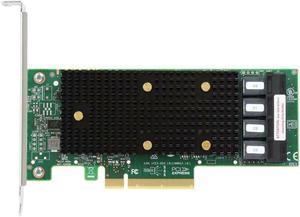
- Model #: BQ0ASD0ZC8
- $141.00
- $136.00 –
- More options from $136.00 - $325.00
- Free Shipping
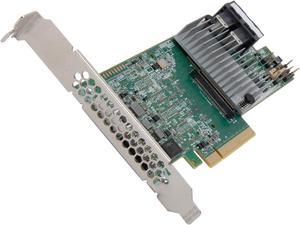
- Internal Connectors: 2 x mini-SAS SFF8643 internal connector (Horizontal mount)
- Transfer Rate: Up to 12Gb/s
- RAID: RAID 0/1/5/6/10/50/60
- Cache Memory: 1GB DDR3 1866
- Model #: LSI00416
- $125.00 –
- More options from $125.00 - $245.00
- Free Shipping
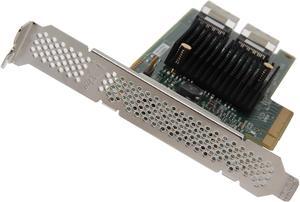
- Internal Connectors: 2 x SFF-8087 mini-SAS
- Transfer Rate: Up to 6Gb/s
- Dimensions: Low Profile (2.6" x 6.6")
- Operating Systems Supported: Microsoft Windows, Linux (SuSE , Red Hat), Solaris, VMware, Free BSD
- Model #: LSI00301
- $35.00 –
- More options from $35.00 - $78.89
- Free Shipping
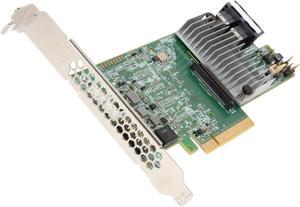
- Internal Connectors: 2 x mini-SAS SFF8643 internal connector (Horizontal mount)
- Transfer Rate: Up to 12Gb/s
- RAID: RAID 0/1/5/6/10/50/60
- Cache Memory: 1GB DDR3 1866
- Model #: LSI00417
- $97.00 –
- More options from $97.00 - $684.40
- Free Shipping
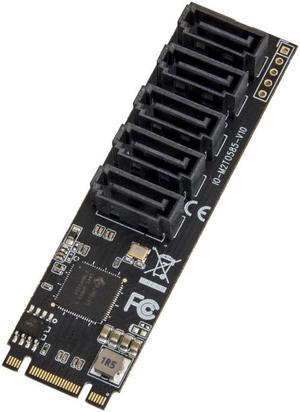
- Internal Connectors: 5 x SATA 6.0Gb/s
- Package Contents: 1 x 5 Port SATA Controller to M.2 Slot 5 x SATA Cables 1 x Manaul
- Parts: 3 Year
- Model #: SI-ADA40141
- $59.99 –
- More options from $29.49 - $92.77
- Free Shipping
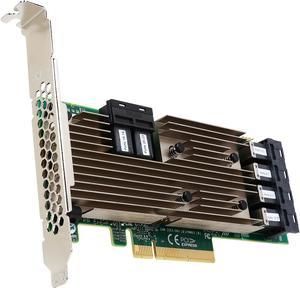
- External Connectors: 24
- Transfer Rate: Up to 12Gb/s
- Part: 05-25699-00
- Dimensions: 2.70" x 6.60" (H x W)
- Model #: 05-25699-00
- $270.00
- $165.71 –
- Save: 38%
- More options from $165.71 - $1,042.11
- Free Shipping

- External Connectors: 4 x USB3.0
- Dimensions: 5.67" x 2.71" x 0.70"
- Operating Systems Supported: Mac: Not supported Windows: Windows 11,10,8.1 Windows Server 2022, 2016, 2012, 2008 (64-bit editions) Linux: Linux kernel 3.10.0 and later
- Model #: RU1444C
- $419.99
- $80.99 –
- Save: 80%
- More options from $80.99 - $259.00
- Free Shipping
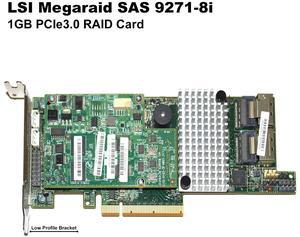
- Model #: UCSRAID9271CV8I
- $399.00 –
- More options from $17.00 - $399.00
- Free Shipping
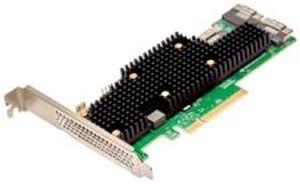
- Internal Connectors: 2 x SFF-8643 mini-SAS HD
- RAID: RAID 0/1/5/6/10/50/60
- Part Number: 05-50107-00
- Part: 05-50107-00
- Model #: 05-50107-00
- $1,499.99 –
- More options from $1,125.00 - $1,499.99
- Free Shipping
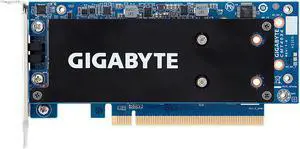
- Internal Connectors: 4 x M.2
- SSD Form Factor: M.2 2280/22110
- Model #: CMT4034
- $99.99 –
- Free Shipping
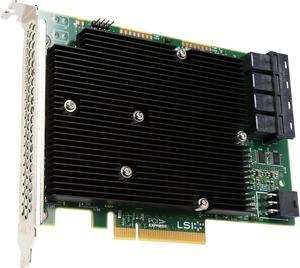
- Transfer Rate: Up to 12Gb/s
- Dimensions: 1.75" x 10.5" x 6.00" (H x W x D)
- Package Contents: 9300-16iHBA,Quick Installation Guide
- Model #: LSI00447
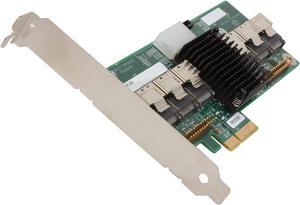
- Internal Connectors: 6 x SFF-8087 mini-SAS
- Transfer Rate: Up to 6Gb/s
- Parts: 1 year limited
- Labor: 1 year limited
- Model #: RES2SV240
- $103.61 –
- More options from $103.61
- Free Shipping
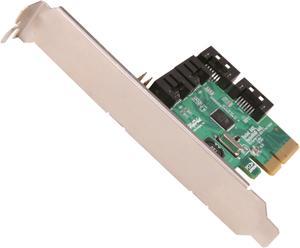
- Internal Connectors: 4 x SATA 6.0Gb/s
- Transfer Rate: Up to 6Gb/s
- RAID: RAID 0/1/5/10 JBOD
- Dimensions: 3.12"(L) x 2.56"(W) x 0.06"(H)
- Model #: RocketRAID 640L
- $85.99 –
- More options from $84.99 - $138.05
- Free Shipping
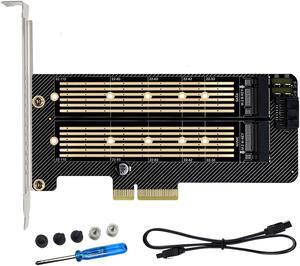
Limited time offer, ends 12/02
- Features: 1.Bailink Dual M.2 PCIE Adapter, Come with SATA cable and Screw Screwdriver 2.Dual M.2 PCIE Adapter - Enhance your storage capabilities with our Dual M.2 PCIE Adapter, Converts one M.2 NVMe SSD (M Key) interface to PCIe 3.0 x4 interface (PCIe 2.0 Compatible), Converts one M.2 SATA SSD (B Key or
- Package Contents: M.2 (NVME & SATA) SSD Adapter Card x1.Regular/Low Profile PCIe Bracket x2,SATA Cable x1,Screwdriver x1,Screw kit
- Parts: 3 Years
- Model #: BL-M2TZCX2
- $22.78
- $17.99 –
- Save: 21%
- Free Shipping
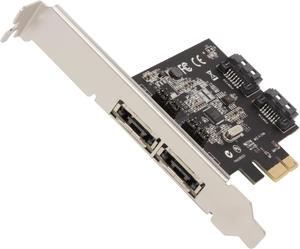
- External Connectors: 2 x eSATA
- Internal Connectors: 2 x SATA 6.0Gb/s
- Transfer Rate: Up to 6Gb/s
- Part: PEXESAT322I
- Model #: PEXESAT322I
- $45.99 –
- $2.99 Shipping
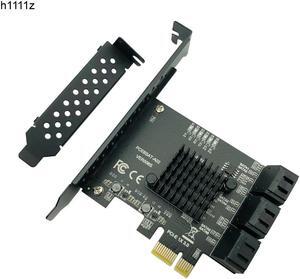
Limited time offer, ends 12/01
- Model #: PCI-612-00136
- $39.88 –
- Sale Ends Soon -
- More options from $39.80 - $41.22
- Free Shipping
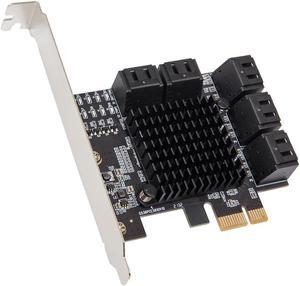
- $30.10 –
- More options from $28.90 - $36.10
- Free Shipping
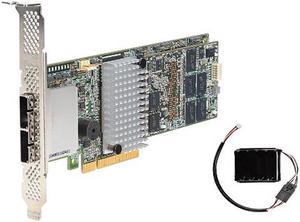
- External Connectors: 2 x SFF-8088 mini-SAS
- Transfer Rate: Up to 6Gb/s
- RAID: RAID 0/1/5/6/10/50/60
- Cache Memory: 1GB
- Model #: RS25SB008
- $25.50 –
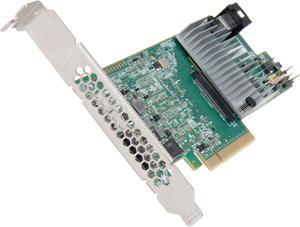
- Internal Connectors: 1 x mini-SAS SFF8643 internal connector (Horizontal mount)
- Transfer Rate: Up to 12Gb/s
- RAID: RAID 0/1/5/6/10/50/60
- Cache Memory: 1GB DDR3 1866
- Model #: LSI00414
- $99.99 –
- More options from $99.99 - $255.00
- Free Shipping
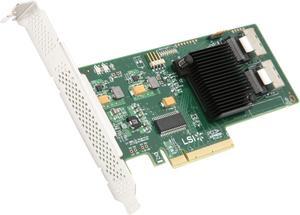
- Internal Connectors: 2 x SFF-8087 mini-SAS
- Transfer Rate: Up to 6Gb/s
- Dimensions: 6.60" x 2.60"
- Operating Systems Supported: Microsoft Windows, Linux (SuSE , Red Hat), Solaris, VMware, FreeBSD
- Model #: LSI00194
- $64.20 –
- More options from $64.20
- Free Shipping
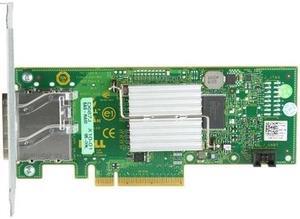
- Transfer Rate: Up to 1.2 GBps
- Model #: 405-AAES
- $128.00 –
- Free Shipping
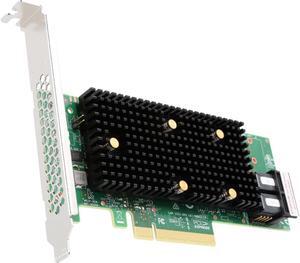
- Part Number: 9400-8i
- Model #: OEM Industrie1
- $109.99
- $109.90 –
- More options from $109.90 - $189.00
- Free Shipping
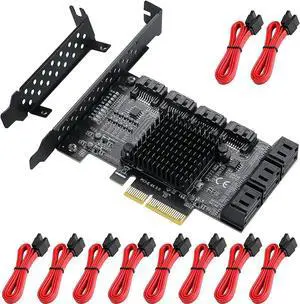
- Model #: sss-536
- $39.86 –
- Free Shipping
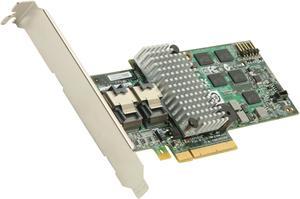
- Internal Connectors: 2 x SFF-8087 mini-SAS
- Transfer Rate: Up to 6Gb/s
- RAID: RAID 0/1/5/6/10/50/60
- Cache Memory: 512MB DDRII cache (800MHz)
- Model #: LSI00198
- $59.00 –
- More options from $59.00 - $68.00
- Free Shipping
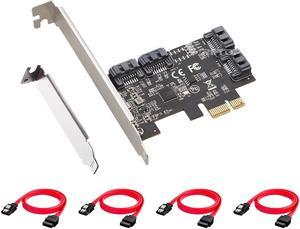
Limited time offer, ends 12/07
- Model #: PCETS3-4P4C
- $27.99 –
- Free Shipping
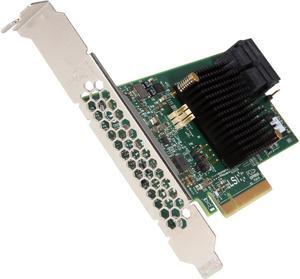
- Internal Connectors: 2 x mini-SAS SFF8643 internal connector (Horizontal mount)
- Transfer Rate: Up to 12Gb/s
- RAID: RAID 0/1/5/10/50 JBOD
- Part: LSI00407
- Model #: CLSI00407
- $107.99 –
- More options from $107.90
- Free Shipping
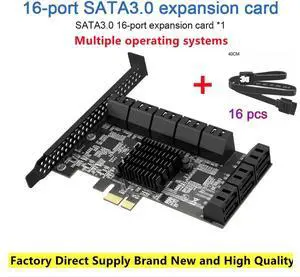
- Model #: sss-539
- $44.75 –
- Free Shipping
Redundant array of independent disks (RAID) controller cards allow your computer to communicate with HDDs and SSDs. There are several types of RAID controllers to fit the needs of both large companies with mission-critical systems and small start-ups with limited budgets. You can find SATA and SAS controller cards to meet your connectivity requirements.
HBA Controller Cards Are Reliable and Fast
A controller card lets the host system and the storage system communicate with each other. Host Bus Adapters (HBA) expansion cards plug into a slot on the motherboard, usually PCIe®. They physically connect the server to HDDs and SSDs. These add-on cards are a fast and reliable way for storage devices to communicate with the host system. They can connect many HDDs and SSDs to the computer, and they allow the OS to read and write on the hard drives. These controller cards can support SATA, SAS and Fiber Channel. They’re very common in servers and workstations.
RAID Controller Cards and Software Enhance Performance and Reliability
RAID controllers can improve the computer’s performance and reliability by storing data across multiple drives. They can also decide to write data on a SSD or HDD based on several factors. RAID cards can be hardware-based or software-based. Hardware RAID controller cards connect to the motherboard via PCI-X, PCIe or RAID-on-chip (ROC). RAID software, instead, runs on the CPU. The latter is typically a cheaper solution, as it doesn’t require dedicated hardware or impact server memory.
RAID 0 Boosts Write and Read Speeds
RAID 0, also called disk striping, improves write and read speeds by splitting data across different disks. The disks work as a single partition, and there’s no data redundancy with the RAID controller cards. RAID 0 requires a minimum of two drives.
RAID 1 Prevents Data Losses
RAID 1 provides redundancy by writing identical data to two drives. If one of the drives fails, the computer can still access data on the other, ensuring that your data remains intact. When you replace the faulty drive with a new one, the RAID card copies data on it from the remaining drive. Many technicians call this procedure “disk mirroring”. The system can read both of the identical disks at the same time, and RAID 1 can improve read speed.
RAID 10 Combines the Features of RAID 1 and RAID 0
RAID 10 uses both disk striping and mirroring to offer data redundancy and a performance boost. RAID 10 splits data across pairs of identical disks, just like RAID 1. It also uses a similar system as RAID 0 to provide better write and read speeds. This configuration requires a minimum of four storage drives. Since the data runs across different disks, these RAID cards typically use more storage space than other controller types. RAID 10 cards offer superior performance, and they are common in web servers and large databases.
Bestselling Controllers / RAID Cards Reviews:
“ The Megaraid SAS controller worked out of the box in Linux (Debian 12) with a connected LTO-5 tape drive on a desktop computer. ”
Intel RS25SB008 PCI-Express 3.0 x8 Low Profile Ready SATA / SAS RAID Controller Card“ I am liking the card, even though it appears to be an open-box item and not new. ”
LSI 9305-16i PCI-Express 3.0 x8 Low Profile SAS Host Bus Adapter“ Excellent for the price and you also get two SAS to SATA cables. ”
LSI 6Gbps SAS HBA 9220-8i P20 IT Mode ZFS FreeNAS unRAID + 2* SATA Cable“ Installed new card everything booted including my RAID arrays. Just as I was hoping. ”
LSI MegaRAID Internal Low-Power SATA/SAS 9260-8i 6Gb/s PCI-Express 2.0 w/ 512MB onboard memory RAID Controller Card, Single--Avago Technologies“ I'd recommend it. It is inexpensive and does the job. ”
4 Port SATA III PCI-e 3.0 x1 Card Non-Raid with Low Profile Bracket“ Great product for the right situation. ”
HighPoint Rocket 1104 4x M.2 PCIe Gen3 x16 NVMe Host Controller“ Great card was able to plug my 8 drives directly when my boot drive usb stick died. ”
LSI 6Gbps SAS HBA 9220-8i P20 IT Mode ZFS FreeNAS unRAID + 2* SATA Cable“ Worked like a dream. ”
PCI Express SATA 3.0 Controller Card, 2-Port PCIe to SATA III 6GB / s Built-in Adapter Converter, PCI-E to SATA 3.0 Disk Array Card,with Small Bracket and 2 SATA Cable Support SSD and HDD













